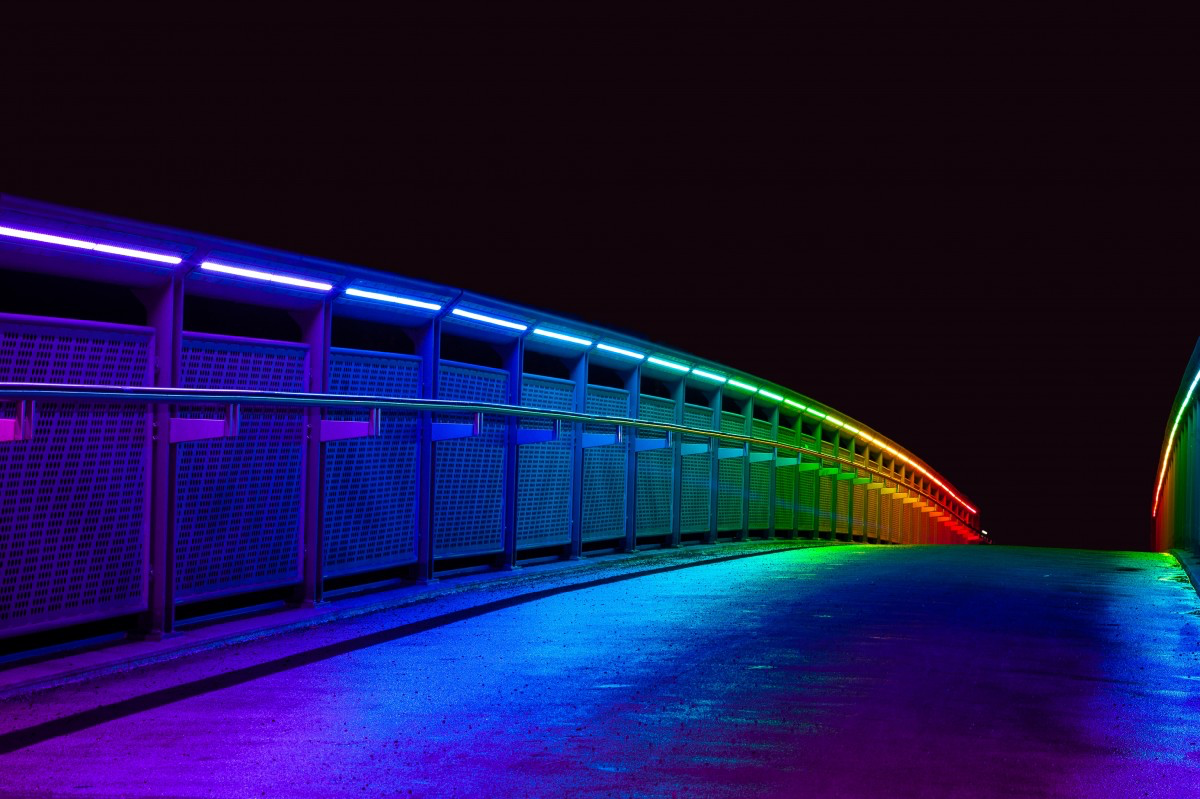Since the origin of the lightbulb in the late 1800s, there have been several major leaps that have changed the way we illuminate our world. In fact, over the past two decades, LED lighting technology has taken over both the commercial and residential factions of the lighting industry.
LED lighting technology has made it possible to create lights that are brighter, better for the environment, and more aesthetically appealing. This technology has been applied to a wide range of different lighting structures, ranging from the large screens you might see at stadiums to the Christmas lights you’d find in your own home.
There is no doubt that the introduction of this innovative technology is something that people everywhere can be excited about. However, while the benefits of LED tech may be obvious to those familiar with the industry, few people understand what—exactly—makes this new technology different from the fluorescent and incandescent bulbs of yesteryear.
In this article, we will take a brief look inside the LED lightbulb, discussing its history, its components, and its many different benefits. By understanding why the introduction of this tech is not just a tiny step, but a huge leap forward, it will be easier to recognize how it has permanently changed our world.

The lightbulb emerged around the end of the 19th Century, largely due to the works of Edison, Tesla, and other important scientists of that era. When the lightbulb was first introduced, it was clear that the old methods of illuminating the world—methods which date back to the times of the Neanderthal—would be permanently replaced.
Over the next century, researchers around the world would work diligently to make the original lightbulb more powerful, more efficient, and ultimately more accessible. However, it was not until the 1960s that the mere concept of LED lighting—which stands for light emitting diode—would be introduced.
At first, LED tech was much more of a theoretical concept than a material reality. Things such as color, sustained light, and energy emission and transmission all posed unique challenges for industry innovators. Eventually, towards the end of the 1990s, Chinese scientists would be credited for creating the first LED Christmas Tree.
Even after this major breakthrough, coloration still remained an issue. However, eventually, three scientist from Japan—Akasaki, Amano, and Nakamura—would earn a Nobel Prize in 2014 for perfecting the white LED bulb. Shortly following this accomplishment, lighting companies around the world have gone “all out” in their commitment to spreading LED technology. In just a few short years, LED tech has become cheaper to produce, higher quality, and more dynamic than ever.

So why is it, exactly, that LED technology is like nothing we have ever seen before? While it is true that, yes, these bulbs emit light, they are very different from their ancestors. The root of these differences, as you might expect, can be found in the LED bulbs themselves.
An LED bulb—whether used in a traditional setting, for LED Christmas lights, or anything else—has multiple different components.
Together, each of these different lighting components come together to create the sort of lighting displays we know and love. LED lighting technology was not developed overnight—instead, this technology is the culmination of many distinct scientific achievements.
Now that you are aware of the background and inner workings of the LED lightbulb, you are probably asking yourself, “Should I make the switch?” In order to effectively answer this question, you may want to consider the potential benefits these lights can provide:
Without the introduction of LED lighting technology, none of these benefits would be attainable. Unsurprisingly, these bulbs have been dramatically increasing their market share with each passing year.
Conclusion
Though we may not know what technology will replace LED lighting in the future, while its here, it is certainly a technology that is worthy of admiration. The LED technology has improved the way we light our world, with very few (if any) real drawbacks. As time goes on, this technology will become further enhanced and capable of addressing the unique challenges of the 21st Century.